On our third and last morning in Beijing, Frank arranged for the hotel to prepare 2 early breakfasts for us because we departed before their dining rooms opened. How thoughtful! The front desk agent had them ready for us, as we checked out. Hard-boiled eggs, ham sandwiches, sweet buns, apples, yogurt, and bottled water. We ate in the spacious lobby, and Frank was right on time—to the minute. We zipped back to Beijing Airport for our flight to Shanghai, which is 1,200 kilometers away. Once again, we admired its clean spaciousness... something we never saw at NYC airports during the last 30+ years. Amazingly (to Americans who endure feeble infrastructure), its porte-cochère shielded all the lanes of traffic.
Frank left the driver idling while he ushered us to our airline's check-in counter. After sincere hugs (I added a kiss on the cheek) and gratuities, our lovable conversations drew to a close. Frank complimented us as two very spirited travelers who admire other cultures and really seek to understand them. He considered us to be friends. It's amazing what connections you can make when you have outgoing/fun personalities. We love that aspect of meeting memorable people on our travels.
Waving goodbye to Frank, we turned to a chirpy woman at the Arrivals booth. All airport representatives had vases of small bouquets of real flowers at their counters. It's the normal way for things to be done: classy and courteously.
Looking as pretty as a department store fragrance model, she admitted us toward the Security Checkpoint, which was efficient and quick. Only America inconveniences its travelers with shoe removal, which is idiotic because most evildoers use private planes or "diplomatic pouches".
The airport has playgrounds for toddlers, family-friendly luggage carts (incorporating kid-sized pedal cars), immaculate lavatories, and stylish eateries. Unlike NYC America, everything was clean.
We loved the prevalence of gadget charging stations... a convenience that travelers can only hope for in American airports. Currently, it doesn't exist in America's richest city.
Typically, airline passengers in America must sit on the floors to be near electric outlets (in third-world style), as seen below.
Unlike JFK Airport—which had NO clocks near our departure gate—every Beijing Airport gate has two analog clock kiosks and two digital clocks with screens that also showed flight updates. It was efficiently thoughtful. We appreciated the complimentary reading material and clean seats. It comfortably prepared us for our flight going south to Shanghai.
Landing at Shanghai Hongqiao International Airport, we enjoyed a seamless arrivals process. Opened in 1923, SHA is one of two international airports in that coastal city. Serving 22 airlines, it is the 7th busiest airport in China and the 45th busiest airport in the world. It is renown for comfort, cleanness, facilities, and friendly staff. How often do you encounter friendly staff at pricey American airports?
Unlike most airports in the USA, that one was connected to its city by rail. But our trip was pre-arranged with another car. In the reception area, our next tour guide held a placard with our names. Kevin introduced himself, and his driver loaded our bags onto a 6-passenger van.
Landing at Shanghai Hongqiao International Airport, we enjoyed a seamless arrivals process. Opened in 1923, SHA is one of two international airports in that coastal city. Serving 22 airlines, it is the 7th busiest airport in China and the 45th busiest airport in the world. It is renown for comfort, cleanness, facilities, and friendly staff. How often do you encounter friendly staff at pricey American airports?
As a native, Kevin advised us to bypass the hotel (amidst morning traffic) to begin our tour straightaway. We eagerly agreed. Kevin and the driver were happily impressed with Lewis' comprehension/usage of the Shanghainese dialect. We zoomed into the center of the city.
Founded in 1291, Shanghai modernized in the 1840s and became a city of Western colonization and influence, similar to Hong Kong and Singapore. (Hong Kong was returned from Britian to China, but Singapore remains part of the Commonwealth of Nations and keeps some British qualities). After the Opium War of 1842, foreign concessions were established there. Hence, the city developed quickly. In the 1890s, an international settlement sprouted up along the Huangpu River. The city has many Art Deco structures. Since the 1920s, it was called the "Paris" of China and the "Wall Street" of Asia. It was the flashiest and wealthiest city in China—equaling the prestige of Manhattan's Fifth Avenue.
We exited the van at People's Park, originally a British-built horse racetrack. It was reclaimed for the City Hall.
It provides space for 3 museums and newly-built skyscrapers. Kevin politely asked if we wanted to use the park's Starbucks? Lewis politely refused that chain-brand (that lost its way from quality to infestation). We dislike their overpriced bitter coffee.
Hearing Lewis' response, Kevin looked up in surprise and enthusiastically told Lewis how good his Mandarin fluency was. He was delighted that Lewis' maternal grandparents were from Shanghai and moved to the island-nation of Taiwan to escape the war. (Lewis' paternal grandparents were from Hong Kong). Kevin figured that they were smart businesspeople who enjoyed Taiwan's prosperous culture (which still heavily influences the Chinese stock market). Kevin was charmed to hear Lewis speak fluently in Cantonese, as well. My contribution was offering stories about Manhattan, its Chinatown, and President Obama (whom I hardly know) to satisfy Kevin's "Western" curiosity.
Our "first stop" along the garden paths was a bit unusual. It was a Marriage Market.
Parents who want to arrange marriages for their children post "ads" along a wall (without pictures) for prospective interested parties. It seemed like a strange "public" occurrence because the ads weren't for dating... they were for marriage! Professional matchmakers also sell consultations.
Hearing Lewis' response, Kevin looked up in surprise and enthusiastically told Lewis how good his Mandarin fluency was. He was delighted that Lewis' maternal grandparents were from Shanghai and moved to the island-nation of Taiwan to escape the war. (Lewis' paternal grandparents were from Hong Kong). Kevin figured that they were smart businesspeople who enjoyed Taiwan's prosperous culture (which still heavily influences the Chinese stock market). Kevin was charmed to hear Lewis speak fluently in Cantonese, as well. My contribution was offering stories about Manhattan, its Chinatown, and President Obama (whom I hardly know) to satisfy Kevin's "Western" curiosity.
Our "first stop" along the garden paths was a bit unusual. It was a Marriage Market.
Parents who want to arrange marriages for their children post "ads" along a wall (without pictures) for prospective interested parties. It seemed like a strange "public" occurrence because the ads weren't for dating... they were for marriage! Professional matchmakers also sell consultations.
Our tour included all of the museums in People's Park (named as such by the People's Republic of China). It's centered in the Old City, at the core of Shanghai, whose city walls were destroyed in 1912. From the 1600s, the walls looked like this...
Evidently, centuries of corruption by Manchu officials at the capital deprived Shanghai's population from worldly advancement. When the "walls came down", it was similar to the splurge that occurred after the Berlin Wall came down.
After they were demolished, the city rapidly gained a cosmopolitan vibe, which the Chinese had never experienced. It was also the era of the 1920s: glamour, ballroom dancing, big bands, faster technology, global airlines, and streamlined cars.
The style and swagger of the "Roaring Twenties" remains popular with the city's modern population because Shanghai was the first place in China to experience it and spread it around the nation. As a global fashion statement, the "Shanghainese dress" (said in Chinese as qipao) was the first to taper/shorten Mandarin tunics into "flapper" dresses: short sleeves or sleeveless, with slits to expose legs. Many wearers were the first generation to escape the brutal foot-binding process inflicted by the Ming Dynasty. It was an trailblazing form-fitting style that lasted until the 1960s and regained popularity nowadays!
The city is proud of its heritage and redevelopment, so it has several museums near its main theatre. Erected in 1998, the Grand Shanghai Theatre is there. We didn't enter, but it's gorgeous with a swooping upturned roof.
We stayed at the 4-star Courtyard Marriott Shanghai Puxi, near the Suzhou River (also called the Wusong River since 1278), and the van deposited us in front of its doorman. After giving us a deferential bow, the bellboy captain politely ascertained how much luggage we had, and he cued a bellboy to collect it. Such efficiency seemed to surprise our humble driver, who was content to stay inside the van.
The bellboy captain ushered us to the Front Desk. There, Kevin—who was awed by the posh surroundings—made sure that everything was correct for us. He would meet us in the lobby, at 8 AM, the next morning. Whilst checking in, another bellboy presented us with a silver tray with cups of tea: one for each of us—including Kevin. It was a hospitable touch.
We were informed that the hotel had a swimming pool and a fitness center that were open 24-hours. Next, we were given a choice of rooms: a King-size bed or two Queen-size beds. Lewis didn't want to raise any eyebrows with the homosexual-revealing choice of one bed.
Lewis summoned the Shoeshine services. A porter removed scuffs and moisturized our leather Bally sneakers (after our trekking across monuments and the Great Wall). Using an electric teapot (kettle) in our room, I boiled water for afternoon tea. Lewis called Shirlyn (his Singaporean friend who lived there) to plan our night. Then, we rested for an hour. Before we left the room, Lewis telephoned the doorman to summon a taxi.
The doorman issued us a little card, with the hotel's address and universal phone number. The back of the card said in Mandarin and English "Please Take Me To" with a blank _____ (to be filled in by the passenger). The doorman filled in the part of the ticket that said, "You boarded taxi number _____." Then, he wished us a pleasant evening. It was considerate, so passengers didn't get disoriented. Our ride to The Bund covered only 4.5 km.
Inside and upstairs, every table was illuminated by flickering candlelight. Incidentally, the Chinese invented matches in 577.
Its back room seemed like a casino, with a loud-thumping DJ, roulette wheel, and gambling tables. The perimeter was full of small tables and chairs for observers.
(It's fascinating that card games were another thing that was invented by the Chinese... along with observatories, gunpowder, wheelbarrows, suspension bridges, and water clocks. They invented the farm hoe 2,000 years before Europeans. Wow).
Our first stop was MoCA: the Museum of Contemporary Art. It's on Renmin Road (People's Road), alongside the river.
Abruptly, Kevin said that he'd wait for us outside. I guess he already saw it too many times. The museum was merely passable, and thus we passed through it quickly. The biggest exhibit of substance was an exhibit of child-oriented collages of the Mona Lisa.
Next was the Urban Planning Exhibition Center.
Mostly, it featured photographs of the city's bygone and salvaged historic buildings. It illustrated how poverty reined beyond the city's fashionable district, until the early 1990s. Comparative "Then and Now" pictures show the dramatic "building boom", since then. It showed regrowth after incineration from Imperial Japan's WWII bombardment in the 1930s. It is a testament to China's ability to modernize rapidly and enrich itself. Considering that China was substandard to Western Powers in 1920, it made astonishing achievements. As you'll see, the captions were printed in Mandarin and English.
Next was the Urban Planning Exhibition Center.
The gem of the museum is a miniature model of the whole metropolis. Alas, the building's pillars are in the map (seen below). The illuminated structures indicate newly-constructed buildings.
The inside resembles a retail mall, with escalators taking you to each floor, and four galleries on each of the five floors. Kevin said that he'd rendezvous with us in the lobby after an hour. Oddly, there isn't any seating in the lobby, so visitors uncaringly sit in clusters on the stairs (a fire hazard).
Photographs aren't permitted in the museum, and we behaved as good tourists. The gallery of Imperial Stamps & Seals was impressive. Intricately handmade carvings, pottery, metalwork, and sculpture from centuries ago was unbelievable! It is worth a visit. Punctually, we returned to the lobby. Kevin was right on time, to the minute. As we approached the van, he asked if that museum was as big as the Metropolitan Museum in Manhattan. Not to crush Kevin's enthusiasm, Lewis kindly indicated that the Met is seven-times the size... yet the Shanghai Museum featured many admirable artifacts! Our tour was done for the day. That was perfect because we intended to spend the evening with Lewis' friend in Shanghai (5 years ago, they worked together in NYC and stayed connected ever since).
It's the largest model of its kind in the world!
Our next stop was one of China's best museums for Asian artifacts: The Shanghai Museum. Following ancient Chinese belief that Heaven is round and Earth is square, you'll notice the building (below) has a circular top and block-like base, with half-circles above the door.
The inside resembles a retail mall, with escalators taking you to each floor, and four galleries on each of the five floors. Kevin said that he'd rendezvous with us in the lobby after an hour. Oddly, there isn't any seating in the lobby, so visitors uncaringly sit in clusters on the stairs (a fire hazard).
Photographs aren't permitted in the museum, and we behaved as good tourists. The gallery of Imperial Stamps & Seals was impressive. Intricately handmade carvings, pottery, metalwork, and sculpture from centuries ago was unbelievable! It is worth a visit. Punctually, we returned to the lobby. Kevin was right on time, to the minute. As we approached the van, he asked if that museum was as big as the Metropolitan Museum in Manhattan. Not to crush Kevin's enthusiasm, Lewis kindly indicated that the Met is seven-times the size... yet the Shanghai Museum featured many admirable artifacts! Our tour was done for the day. That was perfect because we intended to spend the evening with Lewis' friend in Shanghai (5 years ago, they worked together in NYC and stayed connected ever since).
*To see the time that Lewis and I saw parts of the world's largest private art collection, please click this link:
We stayed at the 4-star Courtyard Marriott Shanghai Puxi, near the Suzhou River (also called the Wusong River since 1278), and the van deposited us in front of its doorman. After giving us a deferential bow, the bellboy captain politely ascertained how much luggage we had, and he cued a bellboy to collect it. Such efficiency seemed to surprise our humble driver, who was content to stay inside the van.
We were informed that the hotel had a swimming pool and a fitness center that were open 24-hours. Next, we were given a choice of rooms: a King-size bed or two Queen-size beds. Lewis didn't want to raise any eyebrows with the homosexual-revealing choice of one bed.
*[As I mentioned, homosexuality was tolerated throughout most of China's long history.
That changed in the 1860s, as Europeans and Americans invaded and brought their prejudices. Now, China's acceptance eclipses the USA's, but Lewis is from the USA so he was cautious. Yet, we had nothing to worry about. During our time in the city, we saw gay couples in restaurants and bars. Faster than in the USA, Chinese TV shows unabashedly featured gay and flamboyant characters].
We really enjoyed our room—especially the see-through glass shower (for all the voyeuristic dances that we gave each other). I liked the overhead shower nozzle.
Lewis summoned the Shoeshine services. A porter removed scuffs and moisturized our leather Bally sneakers (after our trekking across monuments and the Great Wall). Using an electric teapot (kettle) in our room, I boiled water for afternoon tea. Lewis called Shirlyn (his Singaporean friend who lived there) to plan our night. Then, we rested for an hour. Before we left the room, Lewis telephoned the doorman to summon a taxi.
The doorman issued us a little card, with the hotel's address and universal phone number. The back of the card said in Mandarin and English "Please Take Me To" with a blank _____ (to be filled in by the passenger). The doorman filled in the part of the ticket that said, "You boarded taxi number _____." Then, he wished us a pleasant evening. It was considerate, so passengers didn't get disoriented. Our ride to The Bund covered only 4.5 km.
We sipped cocktails at the 5-star Peninsula Hotel, famous for its Art Deco style, private Rolls Royces, and white-liveried & gloved bellboys. It is the global flagship hotel of a chain that began in Hong Kong in 1928. Four years ago, I dined at the NYC Peninsula Hotel: the service was utterly terrible, the food order was taken incorrectly, and the meal tasted bland... yet I was expected to leave a NYC-level 20% gratuity (which I did not). In contrast, the experience in Shanghai was much better. It demonstrated the difference of both cities, their employees, and what they deem as acceptable. NYC's attitude of "if you don't like it, get out and make space for the multitudes who are lured here" often permeates businesses that stay in NYC.
That night, the elegant dining room was filled with Shanghainese versions of American jazz music coming from an orchestra and two vocalists. Such music began in popularity during the 1930s. It was the perfect place to have martinis! (Actually, any place is perfect for me to sip martinis!)
Shirlyn arrived in joyful rapture and greeted us warmly! To be ceremonious, she made a fist-in-palm gesture, which is a traditional greeting. Used as etiquette for special occasions, it looks like this...
She and I became friends quickly. Lewis and I described the "wall of marriage ads", and we wondered if a similar system was used for sex partners? She laughed and said people prefer online apps for "no strings attached" casual sex. Prostitution is illegal in China but ads are still placed for "escorts" to accompany businessmen and offer "companionship". Sex workers do not proposition people in the street. Instead, many spas, massage parlors, fitness centers, and saunas feature employees who give erotic services (supposedly without sex). Customers choose their "treatment provider", as if reviewing a menu.
Most massages are received without clothes. If the customer wants erotic treatment, they "accidentally" tap the masseuse's genitals repeatedly... or vice versa.
We also learned that bathhouses in China are nude and separated by gender. (Despite its hedonism, America considers nude bathing to be abhorrent). Used by every type of citizen for relaxation and revitalization, the bathhouses look like this...
That was quite an education of Life/Work Balance in China!
Leaving the hotel, we proceeded down a few alleys to her pre-chosen restaurant. It was intended to surprise us. To blend the city's vintage ambiance, Roaring Twenties history, and modern culinary supremacy, Shirlyn and her Danish boyfriend selected a "speakeasy" restaurant. Best of all, it was merely across the street: Yuanmingyuan Road. Lewis and I were thrilled.
Called the Library Distillery, it was above a nondescript but historic building, without any visible signage. That is typical of a place portraying itself like a speakeasy. The only indication of its location was its doorman/bouncer.
Inside and upstairs, every table was illuminated by flickering candlelight. Incidentally, the Chinese invented matches in 577.
Its back room seemed like a casino, with a loud-thumping DJ, roulette wheel, and gambling tables. The perimeter was full of small tables and chairs for observers.
(It's fascinating that card games were another thing that was invented by the Chinese... along with observatories, gunpowder, wheelbarrows, suspension bridges, and water clocks. They invented the farm hoe 2,000 years before Europeans. Wow).
The main component of the establishment is the restaurant called Light And Salt. Its artisanal bar had mixologists making their own marinades, extracts, and bitters. They used freshly-cut coconut's milk, freshly-squeezed juices, and freshly-grated citrus rinds for zest or garnish. They made egg-white froth. They used unique stemware for each type of cocktail. The drinks were pleasantly strong.
My cocktail choice? A spirited concoction of armagnac, apricot brandy, maple syrup, and peach bitters. It was hou mei! (delicious). The way to say "Cheers" in Mandarin is Gānbēi!
Our table was selected by Shirlyn with care, and she told the reservationist that she wanted to "show off Shanghai" to foreign friends who flew across the ocean to see it. We were seated in a corner, near shelves of library books, and away from the bustle of the place. Yet, we were still close to the bar, so our drinks wouldn't "wilt" while being delivered. The best part: we had a perfect view of the city's night skyline!
I refrained from taking too many "tourist-like" pictures, but you can see Lewis and Shirlyn (above) reviewing the expansive menu. Shirlyn's boyfriend, Mike, is a chef at the Four Seasons Hotel Hangzhou at West Lake: 2 hours away. Mike brought a lovely red wine, which the restaurant's sommelier aerated and decanted for us. She presented an initial sip to Mike, but both agreed to let it "prepare itself" before dinner. Not many places allow you to bring your own bottle, but the sommelier smilingly approved of that label… and probably added a "corking fee". With a quick bow, she withdrew. The wine was wonderful.
We know how to savor a meal languidly! We soak in the atmosphere, anticipate the flavors, and enjoy the time of its preparation. The waitstaff was extremely capable and quick. Despite the casual milieu, everything was done correctly and with supervising layers of management.
Oysters were ordered first—to everyone but Lewis' delight. Mike chose plump varieties.
Appetizers consisted of ox tongue with quail egg yokes and eggplant/tomato sauce. AMAZING! (I always enjoy tongue, LOL). We ate slow-cooked pork belly. It was followed by warm prawn cocktail over avocado-wasabi foam and candied pistachio dust. Lewis chose the foie gras paté with cognac glaze, Calvados chutney, and almond/apricot brioche.
For dinner, we sipped wine and dined on Duck Pie, succulently flavored with bone marrow, foie gras, and crushed peas... in a perfect crust. The Sous-Vide organic chicken had lemon ricotta. Slow-braised Australian organic Short-Ribs (on the bone) were delectably soft, as were the mashed potatoes. As a side dish, we ordered the triple-cooked potato chips in black truffle oil, dusted with shaved Pecorino. Everything was cooked, plated, and served perfectly.
We were enchanted from Mike's tales about Danish culture, infrastructure, free education, universal healthcare, health-conscious foods, emphasis on bicycling, and sustainable energy. Shirlyn's hometown was also tech-savvy, immaculate, and modern. Only our NYC was decrepit and problem-ridden... since its funds are routinely absconded by landowners and authorities. The Dane chuckled at that absurdity—which is typical in the USA—and Shirlyn agreed from her experience living in NYC (before she fled back to Asia for a better life). He recommended that we visit his European homeland, which was something that Lewis and I already planned to do... to see the kingdom's renown standards of Life Happiness.
My cocktail choice? A spirited concoction of armagnac, apricot brandy, maple syrup, and peach bitters. It was hou mei! (delicious). The way to say "Cheers" in Mandarin is Gānbēi!
Our table was selected by Shirlyn with care, and she told the reservationist that she wanted to "show off Shanghai" to foreign friends who flew across the ocean to see it. We were seated in a corner, near shelves of library books, and away from the bustle of the place. Yet, we were still close to the bar, so our drinks wouldn't "wilt" while being delivered. The best part: we had a perfect view of the city's night skyline!
I refrained from taking too many "tourist-like" pictures, but you can see Lewis and Shirlyn (above) reviewing the expansive menu. Shirlyn's boyfriend, Mike, is a chef at the Four Seasons Hotel Hangzhou at West Lake: 2 hours away. Mike brought a lovely red wine, which the restaurant's sommelier aerated and decanted for us. She presented an initial sip to Mike, but both agreed to let it "prepare itself" before dinner. Not many places allow you to bring your own bottle, but the sommelier smilingly approved of that label… and probably added a "corking fee". With a quick bow, she withdrew. The wine was wonderful.
We know how to savor a meal languidly! We soak in the atmosphere, anticipate the flavors, and enjoy the time of its preparation. The waitstaff was extremely capable and quick. Despite the casual milieu, everything was done correctly and with supervising layers of management.
Oysters were ordered first—to everyone but Lewis' delight. Mike chose plump varieties.
Appetizers consisted of ox tongue with quail egg yokes and eggplant/tomato sauce. AMAZING! (I always enjoy tongue, LOL). We ate slow-cooked pork belly. It was followed by warm prawn cocktail over avocado-wasabi foam and candied pistachio dust. Lewis chose the foie gras paté with cognac glaze, Calvados chutney, and almond/apricot brioche.
For dinner, we sipped wine and dined on Duck Pie, succulently flavored with bone marrow, foie gras, and crushed peas... in a perfect crust. The Sous-Vide organic chicken had lemon ricotta. Slow-braised Australian organic Short-Ribs (on the bone) were delectably soft, as were the mashed potatoes. As a side dish, we ordered the triple-cooked potato chips in black truffle oil, dusted with shaved Pecorino. Everything was cooked, plated, and served perfectly.
To read about our trip to Denmark, go here: https://halfwindsorfullthrottle.blogspot.com/2019/04/our-trip-to-copenhagen-denmark-part-1.html
During dessert, we learned that ancient China was the first to record the recipe for modern-day baklava! It was introduced to them by the Mongols, who brought it from the Mediterranean.
Our banter and conversations made us the last table to leave the restaurant (while the gambling room roared on). We paused at nearby Paris Rouge, where the gregarious manager happily described his menu, even though we were only interested in his espresso machine. (Three of us admired his lips). He was affable and friendly, which I give him credit for (after a long Saturday night on his feet in a busy place… wearing a three-piece suit).
Then, we admired the illuminated cityscape. It was wondrous for us because there is nowhere in New York City where you can enjoy a clean, crime-free viewpoint of similar waterside sites.
It was a busy day, indeed. Back at the hotel, some relaxation before bedtime was smoothly accepted. Hǎo jué hǎo mèng.



































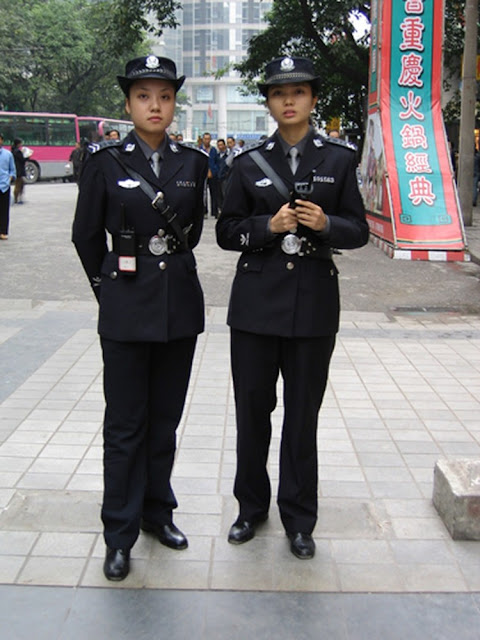


























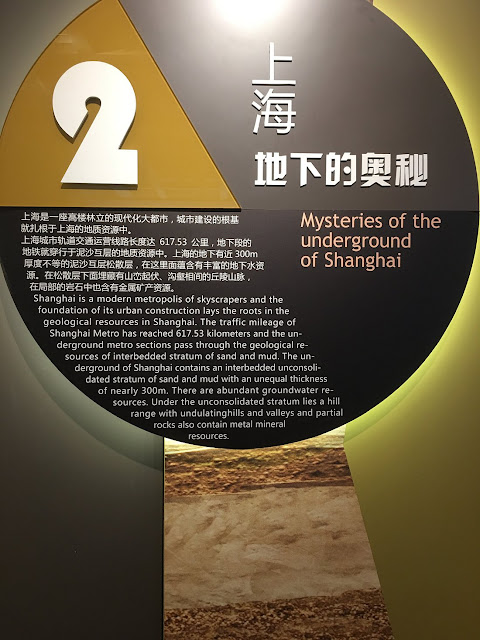

















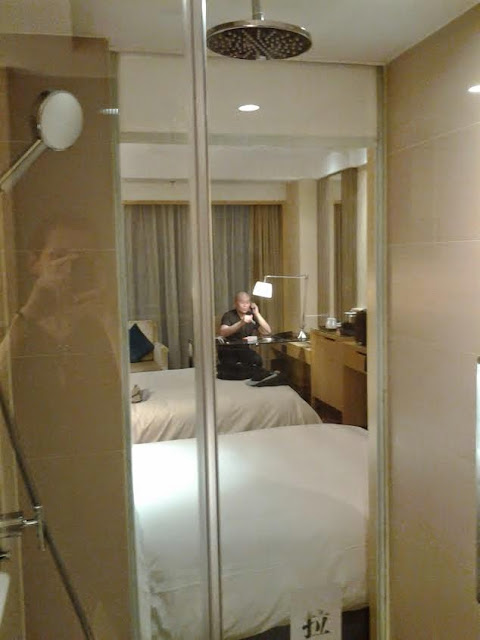
















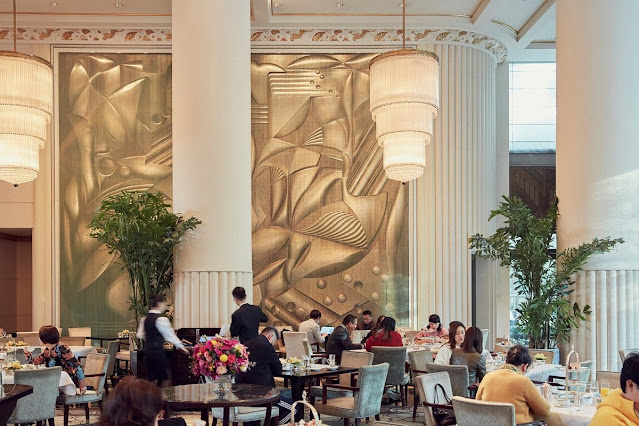

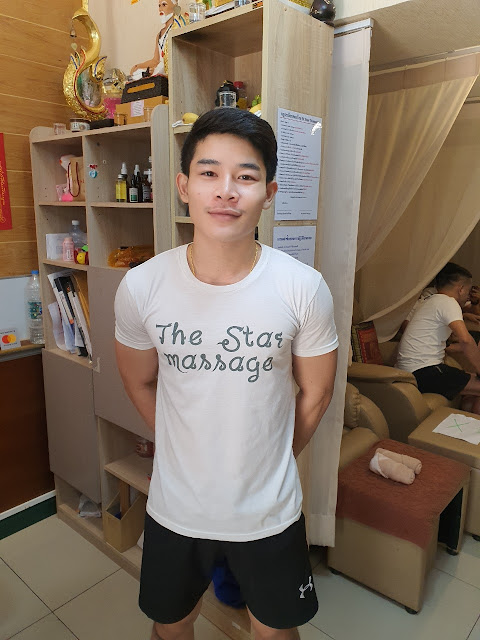






































The pics looks amazing! The hotel looks fabulous! Are you you even left or are you in Chicago?!
ReplyDeleteThanks, Squeaks! Hope you enjoy the other pix, too!
Delete